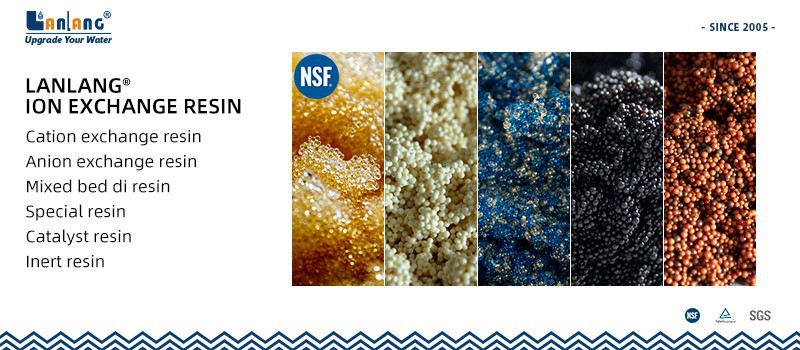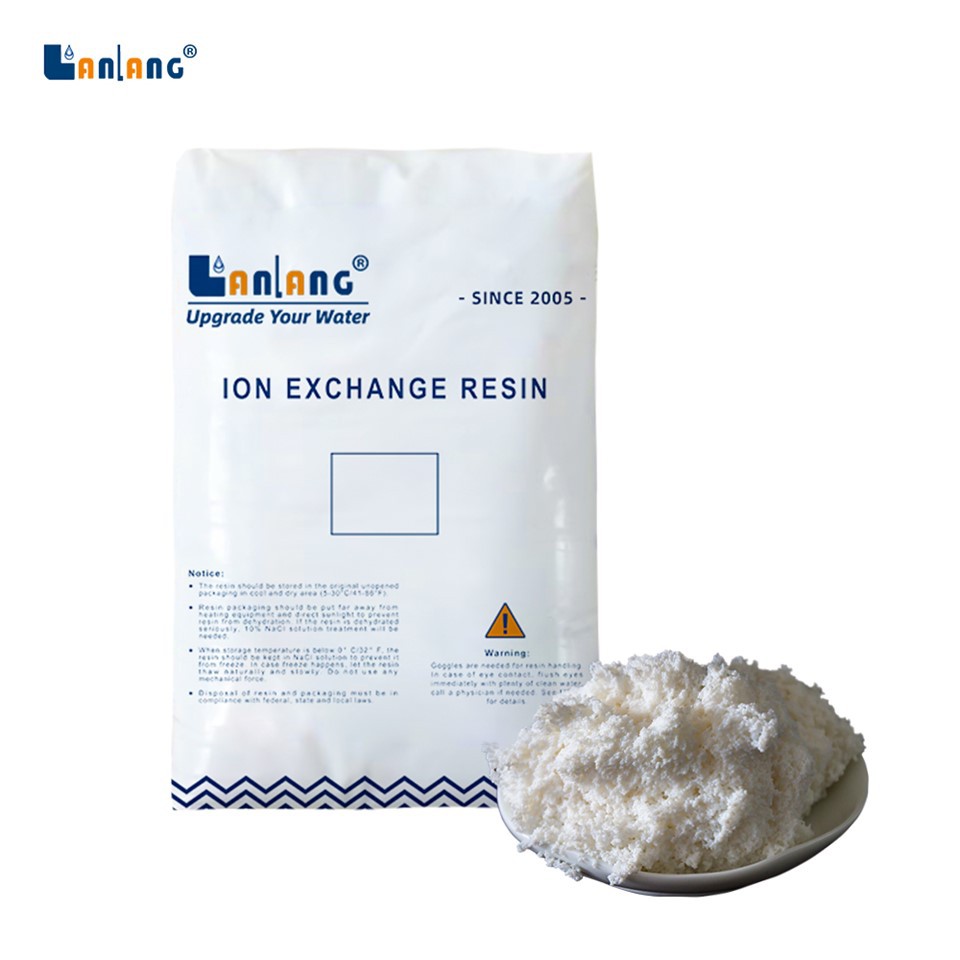
Product Specification
Lanlang ® TA463D is an anion exchange resin with weak base groups [-N+(R2)·H2O] on a macroporous acrylic framework. Mainly used for the extraction, separation, and concentration of uranium in alkaline leaching uranium mines.
The alkaline leaching method contains a large amount of free humic acid and hydrosulfites in the leaching solution. When using styrene based strong alkaline anion resins, these impurity ions cannot be leached together during the usual leaching process, and continuously accumulate on the anion resin, thereby affecting the adsorption of uranium. This phenomenon is called organic matter pollution of ion exchange resins.
The special acrylic framework and macroporous structure of Lanlang ® TA463D resin have high uranium saturation adsorption capacity, excellent resistance to organic pollution, good hydrophobicity, anti osmotic pressure strength, and stable physicochemical properties. It can effectively avoid the pollution of anion resin and maintain its long-term adsorption performance for uranium.
Uranium is a radionuclide, more likely to occur in ground water than surface water, and is often found together with radium. Mitigation of problem waters may require treatment for the removal of both uranium and radium.Uranium typically exists in water as the uranyl ion, UO22+, formed in the presence of oxygen. At pH above six, uranium exists in potable water primarily as the uranyl carbonate complex. This form of uranium has a tremendous affinity for strong base anion resins.
The relative order of affinity of strong base anion resins for some common ions in drinking water show uranium at the top of the list:
Uranium/Perchlorate >> Sulfate/Chromium > Selenium/ Arsenate > Nitrate > Chloride > Bicarbonate > Fluoride.
Resin Selection
Cation resin in the hydrogen form has been found to remove uranium, probably by converting the uranium complex to the uranium cation. Removal rates are in the 90–95% range, but the pH of the effluent will be low (about 2.5 to 3.5) and the resin used in this method is not selective, removing all cations.
Cation resin in the sodium form, operating as a softener, has limited use in uranium removal and is very pH dependent. At pH 8.2, there is no uranium removal, and at pH 5.6 there is about 70% removal. As the resin exhausts to the calcium form, removal is even less effective, with no removal at pH 8.2 or 7, some removal beginning to occur at pH 5.6, and 60% removal at pH 4.
Certification
Lanlang is the member of American Water Quality Association. In 2016, Lanlang obtained WQA Certification with NSF / ANSI61 and 372 standard. And in 2022, Lanlang obtained NSF Certification with NSF/ANSI44 and 42 standard.

Hot Tags: ion exchange resin for uranium removal, China ion exchange resin for uranium removal manufacturers, suppliers, factory, Organics Removal resin, ion exchange Softening resin, Resin for heavy metal water, adsorption technology for PFAS, ion exchange water softener, Organics Removal resin


